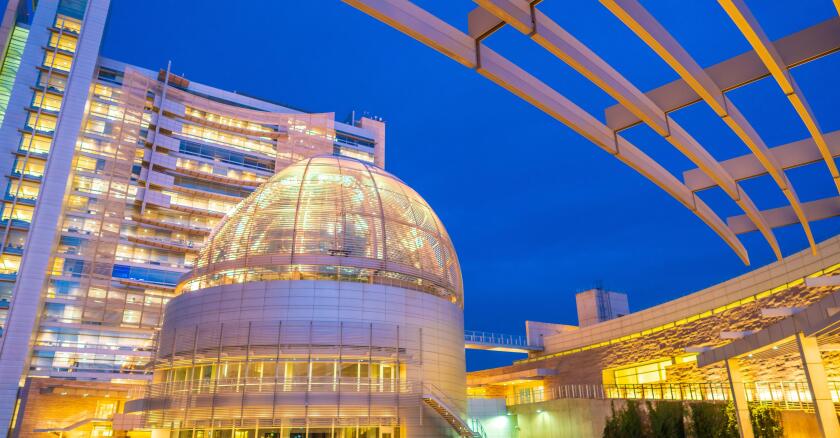San Jose is aiming to solidify its status as a leader in artificial intelligence, in large part by supporting the business ecosystem through initiatives like an AI incentive program for startup companies.
The city has been thinking differently when it comes to artificial intelligence, from its leadership of the GovAI Coalition, which is open for participation, to accessibility-focused initiatives. The impact is clear; AI companies are moving in.
“This is a pro-business environment,” said Stephen Caines, who serves as the city’s chief innovation officer and budget director, and senior adviser to Mayor Matt Mahan.
San Jose’s AI incentive program is one part of what shapes this culture. Through the program, officials will be awarding up to $50,000 in grants to three early-stage AI companies that establish operations in the city. Winners are expected to be announced in July or August, Caines said.
The goal, though, is not to simply award the grants and be finished, but to help support the winners’ development as they establish themselves in the city. To do so, the city is working with local business partners that can share resources, training and consulting expertise.
“While the private sector keeps getting more productive, government has been delivering less impact per taxpayer dollar year after year,” Mahan said via email. “In San Jose, we’re changing this dynamic by bringing the technology being created here in our backyard into City Hall.”
Mahan said the results demonstrate the city’s investments in innovation have improved trust in both government and community outcomes.
Another example of the reach of the city’s AI ecosystem is the Plug and Play AI Center of Excellence in San Jose, an accelerator initiative convening industry leaders across sectors to discuss AI trends and explore partnership opportunities.
Khaled Tawfik took on the city CIO role in March 2022 and Mahan was elected mayor in January 2023; both officials have had a mindset of innovation with a focus on results, Caines said. Tawfik’s object detection project was an early example of that culture shift, identifying issues proactively rather than waiting on residents to report them. The project has since evolved, and a request for information for phase two has been issued, Caines said. Technology implementation initiatives are supported by having leadership in different city offices focused on “that vision to dream further,” he said.
While outcomes are a key focus of technology projects in the city, San Jose’s approach allows for experimentation with oversight in an environment the mayor has deemed “the civic sandbox,” according to Caines.
“A lot of this is culture change,” he said, emphasizing that new officials have an obligation to advance the traditional pace of government work. “Not being afraid to fail — that’s really what it’s about.”
In practice, this strategy often comes in the form of pilots, allowing for scalable use cases with oversight to measure impacts and adjust as needed.
In San Jose, instead of having to rely on human translators through headsets during City Hall visits, residents can now read translations in real time on a screen or a smartphone, Caines said. Demand for the pilot technology is already evident, he said, especially from Spanish speakers.
“That kind of goes towards the theory that if you build a gateway for people to interact with their local government, they will come,” Caines said.
The flexibility a pilot allows has enabled the city to learn and improve how the service works: A company name, Luna, was being translated rather than being recognized as a proper noun, which the city corrected.
Notably, because San Jose has the largest population of Vietnamese people outside of Vietnam, the city was able to contribute data, such as common language translation pairs, to inform the tool’s output, Caines said.
Similarly, through the GovAI Coalition, training data has been created with 27,000 language translation pairs from nine different cities to create a uniquely equipped GPT model, he explained.
“We’re actually creating tools that can be used by governments, for governments,” he said.
The city has also been piloting AI in public transportation for bus route optimization, Tasha Dean, chief communications officer for the mayor’s office, said. In just the pilot’s first phase, it has reduced the possibility of buses stopping at red lights by 50 percent, increasing total ride speeds by about 20 percent.
The key to the city’s success in achieving private-sector AI expansion is to ensure it is safe and clean, appealing to both individuals and startup founders looking to establish themselves, Dean said.
The city’s object detection pilot contributes to this goal, in which city vehicles with mounted cameras and detectors identify things like potholes and streetlights that have gone out before residents report them: “So it’s about delivering basic services better for residents.”
San Jose is the 12th most populous city in the nation, Dean said, but even so, being surrounded by technology innovation does not always mean that a government will benefit. City leaders dove into AI to ensure its innovation could be brought into the public sector.
“We have, right now, more patents per capita in AI than Oakland and San Francisco combined,” she said, underlining the strength of the location in terms of manufacturing power and private-sector technology organizations. “We believe that San Jose is the capital of AI.”
*This article was originally published by Government Technology, Industry Insider — California's sister publication.
Inside San Jose’s Push to Become the 'Capital of AI'
What to Know- San Jose is offering incentives, like $50,000 grants to early-stage startups, and launching pilot projects that bring AI directly into government services.
- The city’s “civic sandbox” environment will focus on tech-forward pilots, like the object detection system and multilingual tools.








